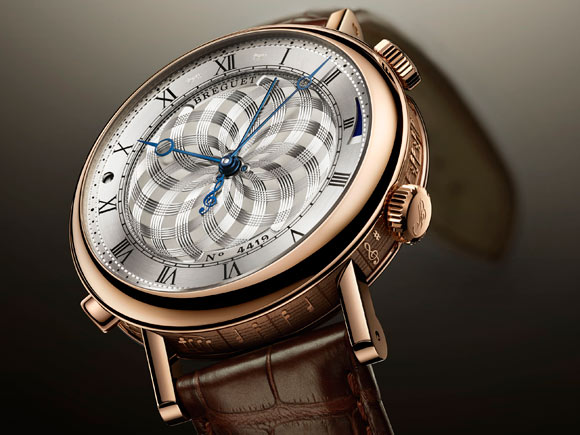The exhibition “Breguet, innovations that changed History… More than 200 patents since 1775” is exhibiting a selection of eight decisive inventions in a “high-tech” setting composed of experimental showcases destined to awaken the senses and spark curiosity.
The Tourbillon propelled Breguet into an elite circle of inventors in 1801, when the French Interior Minister granted the brilliant watchmaker a patent for this new type of regulator. The latter made it possible to compensate for the disturbing effects of gravity on watches’ performance, thus enabling timepieces to display significantly improved precision.
A few years after this discovery, at a time when pocket watches were the prevailing norm, Breguet responded to a request from Caroline Murat, Queen of Naples, by creating the first wristwatch. This oval-shaped complicated model was fitted with a wristlet composed of twisted hair and gold thread. In 1812, Breguet achieved the feat of completely overturning the very concept of timepieces. From an object kept hidden in the pocket, the watch thus became and was to remain a jewellery creation proudly worn on the wrist.
In 1830, Breguet’s son sold to Count Charles de L’Espine the first watch boasting a keyless stem winding and time-setting system, now commonly known as the “crown”. The Breguet N° 4952 watch is thus equipped with a “knurled button” which performs two functions: setting the hands to time and winding the watch. This marked the birth of modern watch winding.
To this very day, Breguet tirelessly perpetuates the pioneering spirit of its founder. The House was notably behind the very first instant dual time-zone device that enables a display of two pre-selected time zones by switching instantly from one to another at a simple press of a pushbutton.
In parallel, the Manufacture leverages high frequency to improve the performances of the balance of some of its models. Rendered possible by the use of lighter components made of silicon, the increase in the frequency of the oscillator – reaching as much as 72,000 vibrations per hour on some timepieces – endows watches with a far more precise rate.
The use of silicon, a material with anti-magnetic properties, also enabled the Breguet engineers to envisage incorporating magnets inside watch mechanism in order to enhance their performance. The Classique La Musicale watch was thus equipped with the first magnetic regulator in watchmaking history.

The introduction of magnetic components, hitherto considered tantamount to horological heresy, opened up whole new vistas of development. Consequently on November 9th 2010, Breguet filed a patent for the magnetic pivot. This technological innovation notably served to create a dynamically stable system able to keep the balance staff centred and self-adjusting. In 2012, Breguet provided a first showcase for this surprising invention by presenting the Classique Chronométrie, a watch featuring exceptional rating results.
Through this exhibition, it takes a look back at over two centuries of inventions and technological developments punctuating its history and shaping its future.






